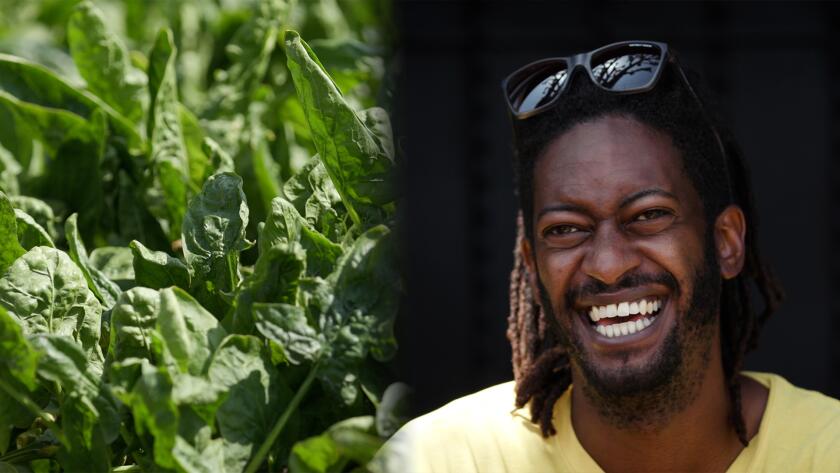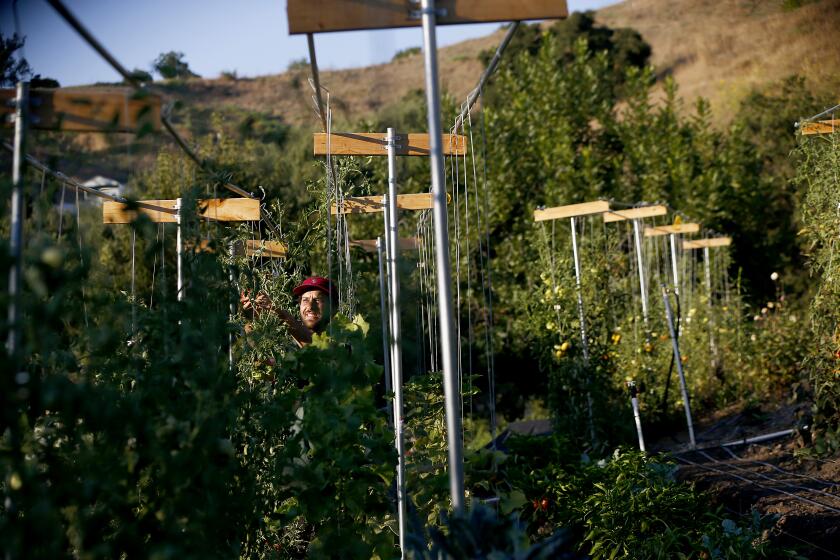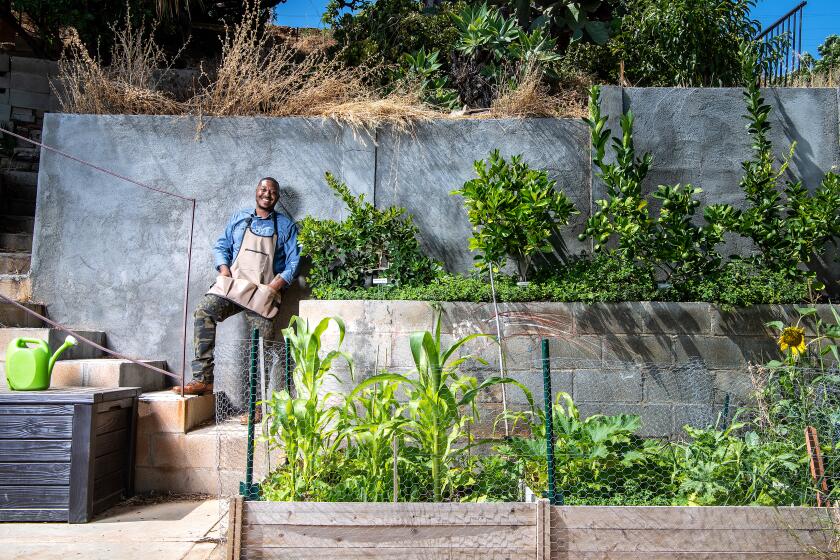‘Microfarms’ come to South L.A. frontyards, bringing fresh produce to food deserts
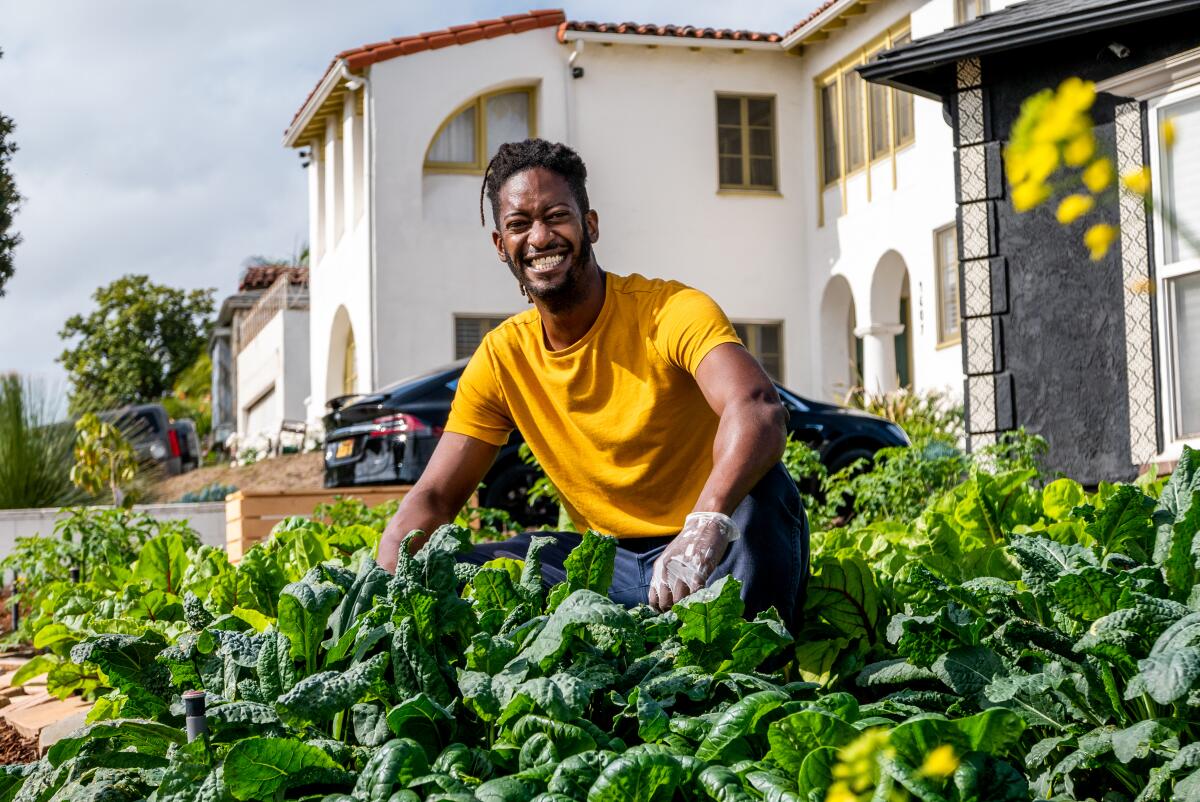
Jamiah Hargins knows the modest frontyard at the corner of Angeles Vista Boulevard and Olympiad Drive like the back of his hand.
A military brat who grew up moving from one country to another, he has traversed the yard’s 970 square feet countless times. He and a small team of volunteers spent a month cultivating the land, installing equipment and planting sloping rows of vegetables, including bok choy, Tuscan kale, rainbow chard, red cherry tomatoes, basil and chives.
It’s enough to cause people in this View Park neighborhood, including their regular mailman, to gawk at the lush green grass transformed into a minifarm.
“For a while, we thought it was just the typical landscaping job in View Park. And we were curious when we saw just how much work was going into it,” said Ibiere Seck, 40, who lives in the neighborhood and watched the farm come to life during walks with her children. “Every day we would just pass and see it evolve. ... There are many beautiful things to see in this neighborhood. But by far, this is the most fascinating and inspirational.”
Seck said she was inspired to adjust a backyard landscaping project she began months ago to include more green space — and is now interested in making space for a microfarm.
That’s something Hargins, a 37-year-old with the easygoing but determined disposition of a youth minister, likes to hear. His Asante Microfarm is named after a Swahili word meaning “thank you.”
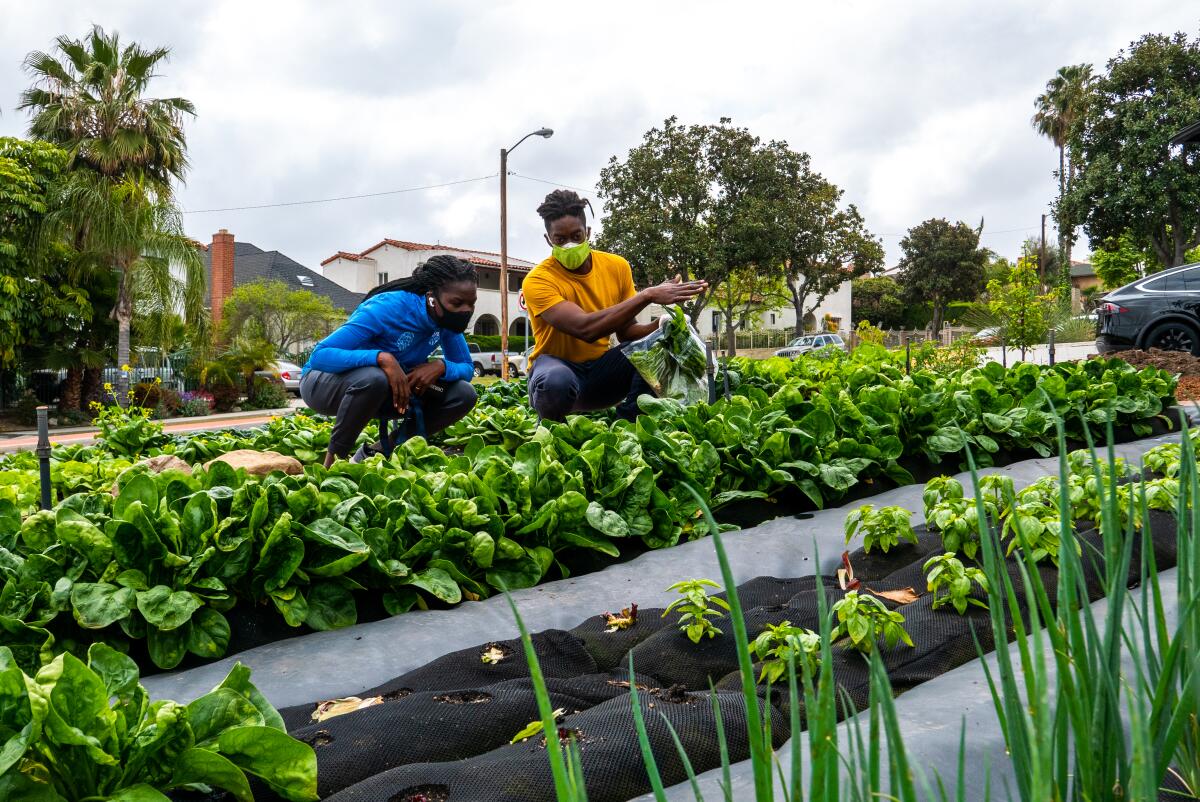
According to the USDA, large swaths of South L.A. suffer from low access to fresh food. It’s a problem even in some socioeconomically better off neighborhoods. In View Park, a majority Black neighborhood where households earned a median income of more than $92,000 in 2015-19, the nearest grocery store is an Albertsons more than a mile away.
Some residents have responded by turning to community gardens and mini markets. Others are building small backyard gardens. The farm at Angeles Vista and Olympiad is a neat hybrid of these approaches.
“The success of Asante Microfarm is an example of the need for more innovative approaches to food sovereignty that are created by, for, and within the communities that have been systematically and strategically excluded from food production,” said Pearson King, Agency Relations Manager at Food Forward, a nonprofit that brings fresh surplus fruits and vegetables to people experiencing food insecurity across Southern California.
Founder Jamiah Hargins discusses the Asante Microfarm in View Park.
The Asante Microfarm is not a vegetable garden for private use, a large urban farm or community garden for a small group of green thumbs. Rather, Hargins has designed an urban farm just big enough to fit in a front yard, real estate most people use for decoration.
Hargins wants to empower underserved communities while giving them access to fresh food by planting small, sustainable farms in lots across L.A.
“Everybody is entitled to the nutrients beneath their feet. That applies to people in apartment buildings, or condos,” he said. “They have the right to have local food. Folks can have a different life. I’m hoping to show that it can be done.”
Filmmaker Ali Greer and teacher/chef Eric Tomassini are juggling full-time careers while living their dream of running the Avenue 33 Farm, an urban farm carved into the steep acre behind their Lincoln Heights home, just minutes from downtown L.A.
For Hargins, the microfarm, built on a residential frontyard on the 4600 block of Angeles Vista Boulevard, is a proof of concept for a much larger goal.
The crops grow from nutrient-rich sacks of compost and the whole farm is supported by an irrigation system that not only recycles water but uses just 8% of the water previously used for grass. The farm was built using part of a $50,000 LA2050 grant from the Goldhirsh Foundation but will be sustained by subscriptions that cost $36 per month and $43 with delivery. For that, subscribers get a 3-pound mix of greens and vegetables every week.
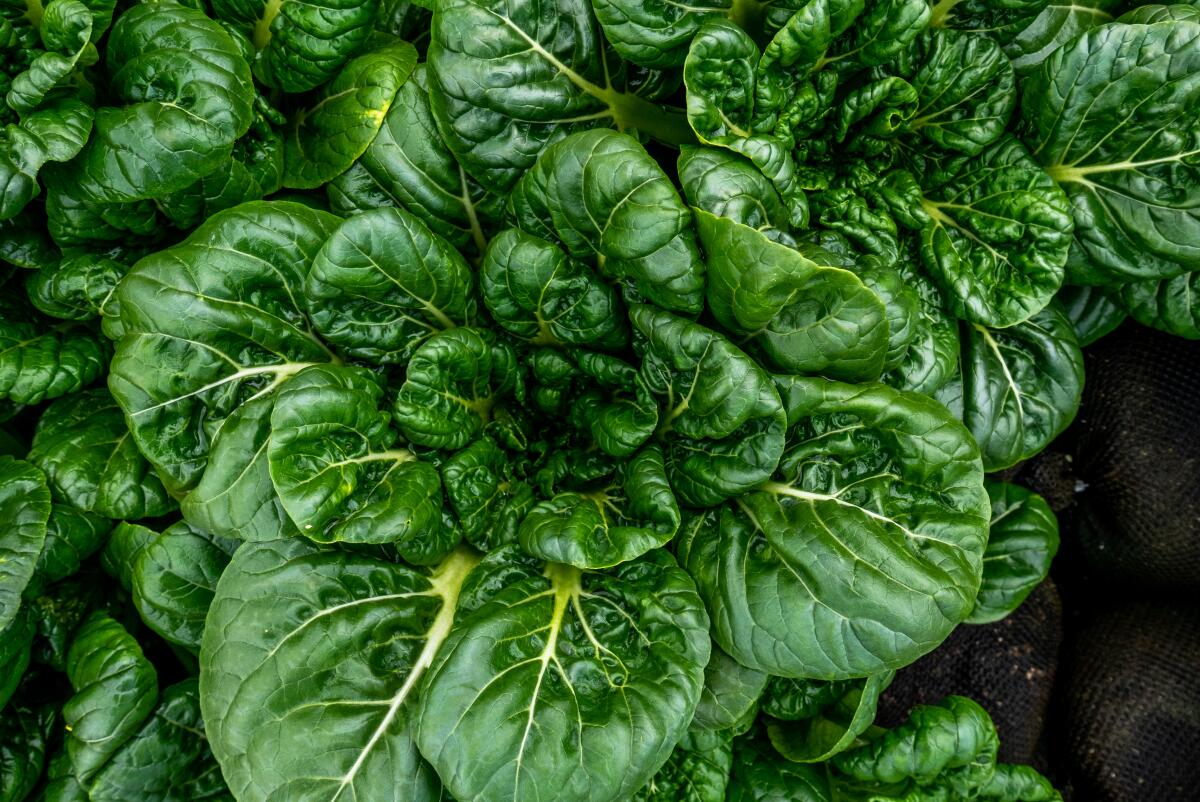
Hargins’ father was an Air Force engineer who moved the family from Colorado Springs, where Hargins was born, to a village called Haverhill in England — then Kaiserslautern in southwest Germany before landing in Clovis, N.M.
In Clovis, Hargins flourished academically, even winning a NASA Mars settlement competition at age 17. On Sundays, he served alongside his father as a deacon at the family church. His father, the head deacon, taught him how to bring people together and cemented his commitment to service.
The social consciousness Hargins developed as a youth nagged at him as a political science student at the University of Chicago and later when he pursued a career in finance. “I did that for a few years, but never really felt the soul in it or felt that it was a real service to the world,” he said.
He moved on to consulting for nonprofits but eventually enrolled in an economic and political development program at the Columbia University School of International and Public Affairs.
Hargins was married by 2015 and he and his wife decided to move to California, where his parents were originally from and where his mother had since settled. Their daughter Triana arrived in 2017. He found a place in L.A.’s West Adams neighborhood, where there wasn’t always easy access to fresh produce. Hargins decided to start a backyard garden and before long found himself burdened with more fruits and vegetables than his small family could eat.
“Growing food is empowering and it builds your confidence because you produce something that exists only because of your hard work,” he said. “You can own it fully. And generally, if you grow too much of it, you can give some of it away.”
Hargins logged onto the Nextdoor app with the idea to swap produce with neighbors.
On the appointed day, 15 people — from all backgrounds and walks of life but mostly from West Adams — showed up at his home ready to exchange artichokes, kale, and onions from their own gardens for Hargins’ lemons, herbs, and beans. The group continued to expand until 2018 when Hargins started Crop Swap LA, an organization dedicated to growing food on unused spaces and creating green jobs.
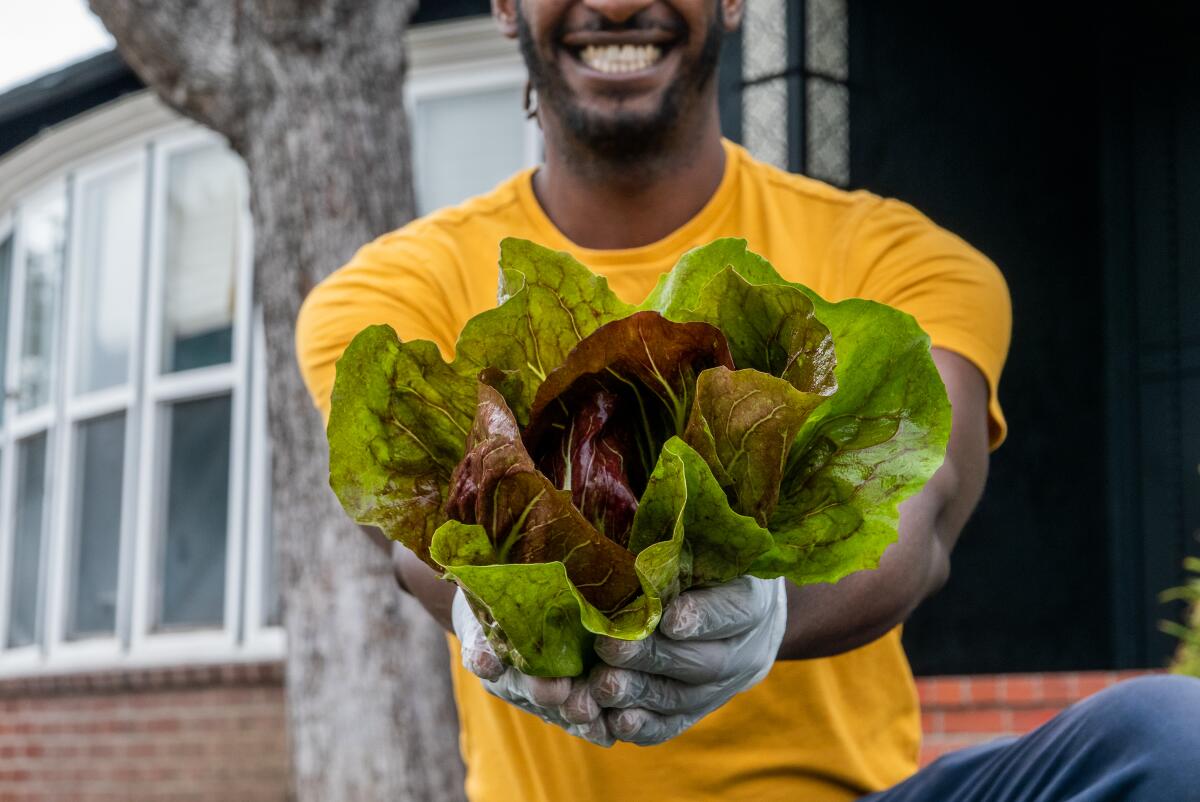
Hargins mustered his charm and passion to get the space that would become the Asante Microfarm. He hit it off with Mychal Creer, an educator who worked with Hargins’ wife at an L.A. charter school. Creer felt for years that he could be doing more with his frontyard. Turning it into a farm seemed like a no-brainer.
“All he had was his word and his plan,” Creer said of Hargins. “I can’t lie; I was nervous at the jump but I wanted to take the risk.”
Besides, he added: “Jamiah was adamant. He just continued to follow up with me until one day he said ‘Hey, Mike, let’s start.’”
From there, Hargins partnered with a group called Enviroscape LA to map out the irrigation and landscaping. And he assembled a team of dedicated volunteers who helped with the hard work of cultivating the yard, digging trenches for irrigation and tending to the plants.
“He’s an amazing teacher. It’s amazing to be part of something where you’re working together, but there’s also leadership. I feel honored to call him a friend and also a mentor,” said Gabriel Stout, 25, a musician who met Hargins at the West Adams Farmers market and has since become a trainee at Crop Swap LA.
His East L.A. backyard is mostly concrete, but Ken Sparks has transformed the hardscape into something alive, with chickens, a butterfly garden and organic vegetables.
It took one month from when the team broke ground to the farm’s grand opening in April. Today, Asante can grow over 600 plants and feed about 50 families.
There are already 35 subscribers, most of whom visit the farm on foot or by bicycle to pick up produce. Along with serving them, Hargins and his team set aside 10% of every harvest for families in need via a community fridge on Degnan Boulevard in Leimert Park.
“It’s a community tithe. That’s what I’ve been calling it. I guess it comes from my church days,” Hargins said.
Hargins and Crop Swap LA hope to grow their project and feed L.A. one yard at a time. Right now, the biggest hurdle is acquiring space, including a headquarters for Crop Swap LA — a property where Hargins and his family can live, garden, and host others who want to reproduce the model set by Asante Microfarm. Ultimately, he hopes to help build and manage 400 microfarms across the city.
Future farms from South L.A. to the Westside can be funded, Hargins says, through a mix of approaches. Hargins intends to raise funds to support planting farms in the yards of low-income homeowners. He’s also working on developing a sliding scale that will allow homeowners to share in profits made by the farm based on their level of investment.
“I’d like to create a culture of economic sustainability,” Hargins said. “I want to create an expectation that people do something better with their space than water grass.”
More to Read
Sign up for Essential California
The most important California stories and recommendations in your inbox every morning.
You may occasionally receive promotional content from the Los Angeles Times.
